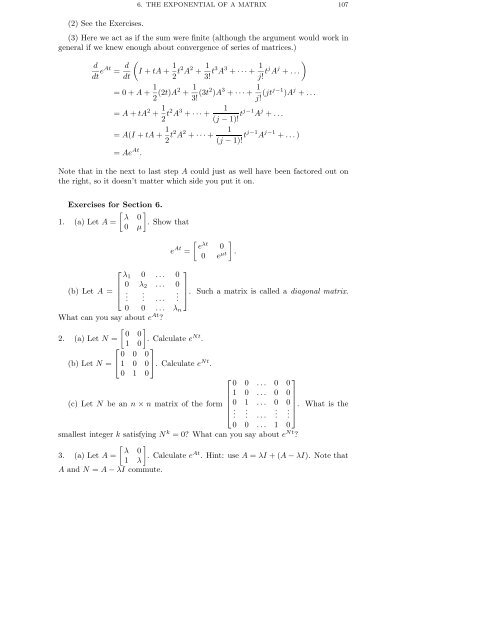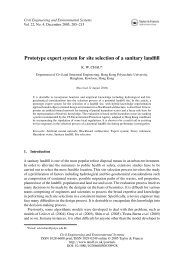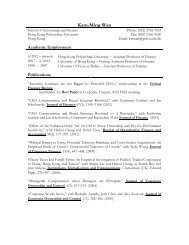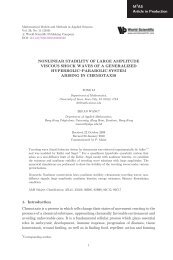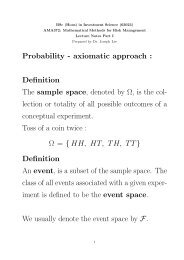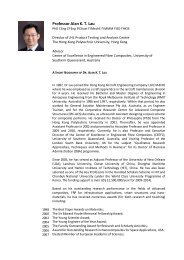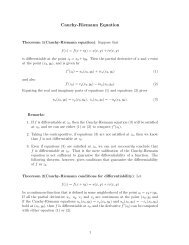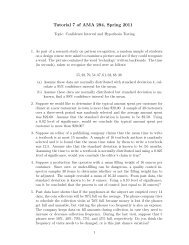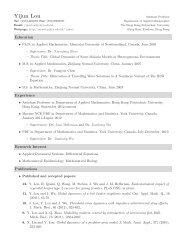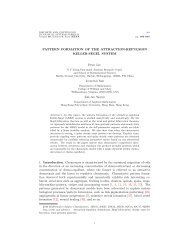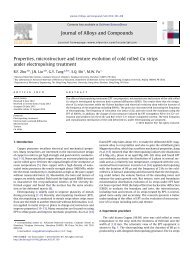DETERMINANTS AND EIGENVALUES 1. Introduction Gauss ...
DETERMINANTS AND EIGENVALUES 1. Introduction Gauss ...
DETERMINANTS AND EIGENVALUES 1. Introduction Gauss ...
You also want an ePaper? Increase the reach of your titles
YUMPU automatically turns print PDFs into web optimized ePapers that Google loves.
6. THE EXPONENTIAL OF A MATRIX 107(2) See the Exercises.(3) Here we act as if the sum were finite (although the argument would work ingeneral if we knew enough about convergence of series of matrices.)ddt eAt = d (I + tA + 1 dt2 t2 A 2 + 1 3! t3 A 3 + ···+ 1 )j! tj A j +...=0+A+ 1 2 (2t)A2 + 1 3! (3t2 )A 3 + ···+ 1 j! (jtj−1 )A j + ...=A+tA 2 + 1 2 t2 A 3 1+ ···+(j−1)! tj−1 A j + ...=A(I +tA + 1 2 t2 A 2 1+ ···+(j−1)! tj−1 A j−1 + ...)=Ae At .Note that in the next to last step A could just as well have been factored out onthe right, so it doesn’t matter which side you put it on.Exercises for Section 6.[ ]λ 0<strong>1.</strong> (a) Let A = . Show that0 µe At =[ ]eλt00 e µt .⎡⎤λ 1 0 ... 00 λ(b) Let A = ⎢ 2 ... 0⎣.⎥. ....⎦ . Such a matrix is called a diagonal matrix.0 0 ... λ nWhat can you say about e At ?[ ]0 02. (a) Let N = . Calculate e1 0Nt .⎡(b) Let N = ⎣ 0 0 0⎤1 0 0⎦. Calculate e Nt .0 1 0⎡⎤0 0 ... 0 01 0 ... 0 0(c) Let N be an n × n matrix of the form0 1 ... 0 0⎢⎥⎣. . ... . .⎦ . What is the0 0 ... 1 0smallest integer k satisfying N k = 0? What can you say about e Nt ?[ ]λ 03. (a) Let A = . Calculate e1 λAt . Hint: use A = λI +(A−λI). Note thatA and N = A − λI commute.


